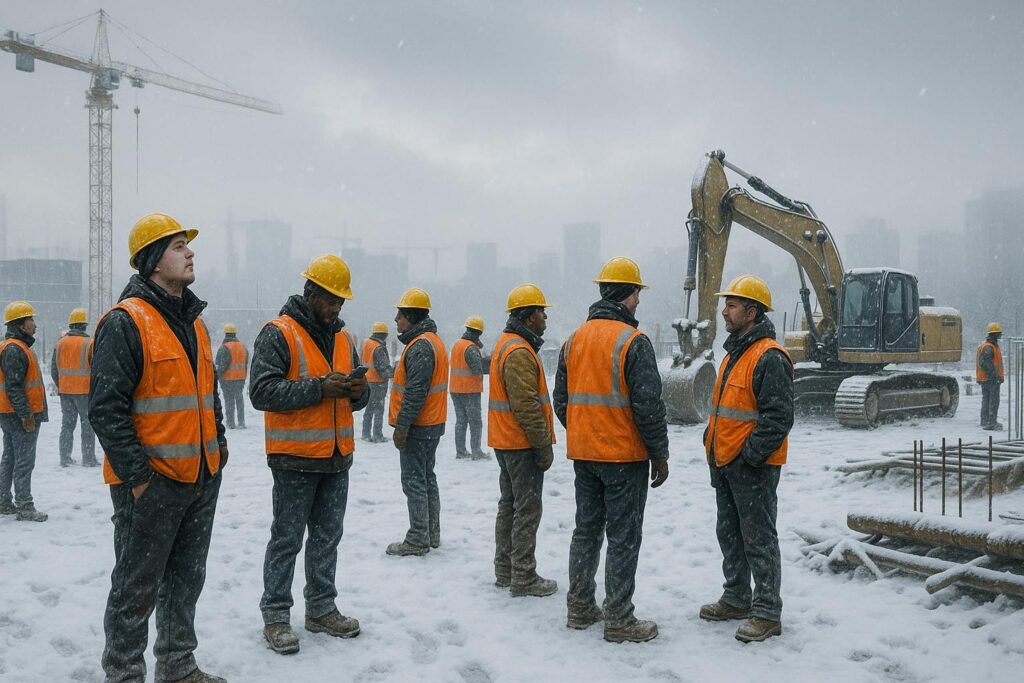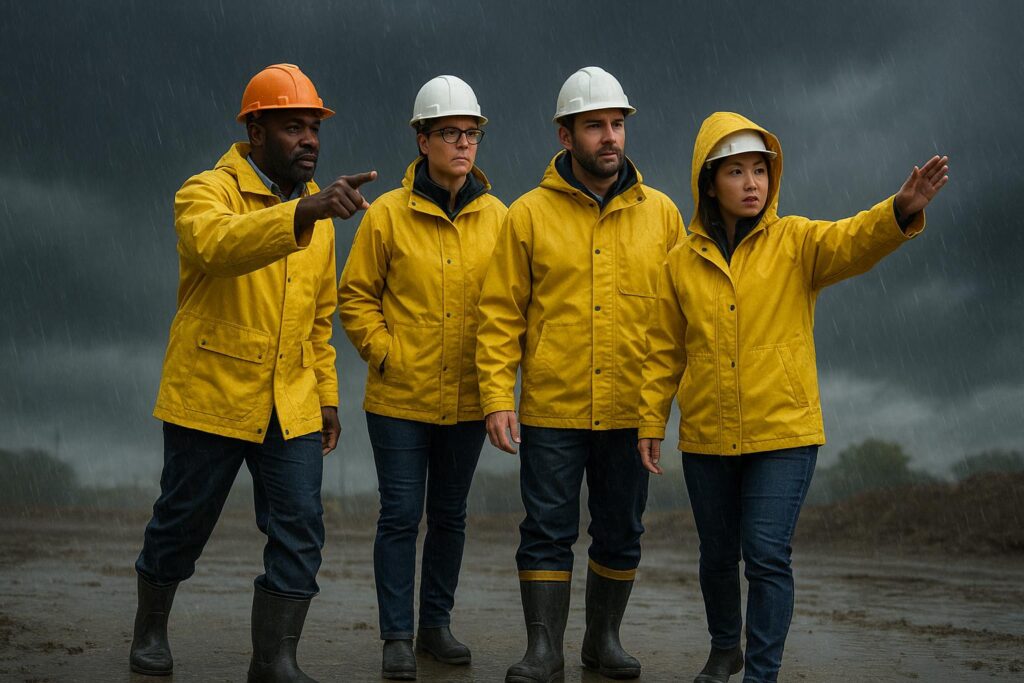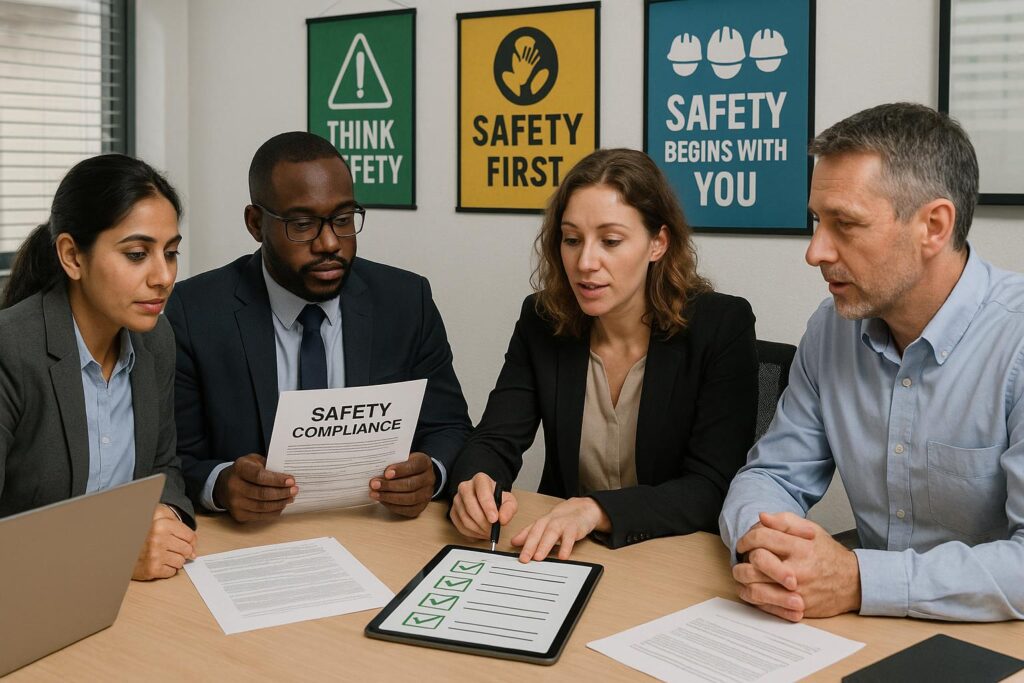Snow Days, Slow Days, and Safety Delays: When to Pause the Job

Workplace safety is a top priority in every industry, but it becomes even more critical during adverse weather conditions and operational slowdowns. Snow days, slow days, and safety delays are not just inconveniences—they are essential opportunities to protect workers, equipment, and the overall success of a project. Knowing when to pause the job can prevent […]
Leading Through the Storm: How Supervisors Can Model Weather-Safe Practices

When severe weather strikes, the safety of every worker depends on clear leadership and proactive planning. Supervisors play a critical role in modeling weather-safe practices, ensuring that teams are prepared, informed, and protected. This toolbox talk will guide supervisors on how to lead by example, foster a culture of safety, and implement effective weather-related protocols. […]
Winter Weather Ahead: Your Essential Cold-Season Safety Checklist

As winter approaches, it’s crucial to prepare for the unique safety challenges that cold weather brings. Whether you’re working outdoors, commuting, or simply navigating daily life, winter hazards can impact your health, productivity, and well-being. This essential cold-season safety checklist will help you stay safe, minimize risks, and ensure you’re ready for whatever winter throws […]
Compliance Without Complexity: Safety Strategies for Small Teams
Introduction Safety compliance is essential for every workplace, regardless of size. For small teams, the challenge often lies in balancing regulatory requirements with limited resources. However, compliance does not have to be complex. By implementing straightforward safety strategies, small teams can maintain a safe work environment, meet legal obligations, and foster a culture of safety […]
Compliance Is Not a One-Time Task: How to Evolve with Changing Standards

Introduction In today’s fast-paced business environment, compliance is more than just a checkbox on a to-do list. It is an ongoing commitment that requires organizations to adapt to evolving standards, regulations, and best practices. Treating compliance as a one-time task can expose your business to significant risks, including legal penalties, reputational damage, and operational disruptions. […]
Are You Audit-Ready? What Inspectors Look for—and How to Stay Ahead

Staying audit-ready is essential for any organization committed to workplace safety and compliance. Whether you’re preparing for a scheduled inspection or a surprise audit, understanding what inspectors look for—and how to stay ahead—can make all the difference. This toolbox talk will guide you through the key areas inspectors focus on, practical steps to maintain compliance, […]
From Policy to Practice: How to Get Teams Aligned on Safety Compliance

Introduction Safety compliance is more than a set of rules—it’s a culture that protects employees, reduces risk, and ensures business continuity. However, bridging the gap between written safety policies and daily workplace practices can be challenging. This toolbox talk explores actionable strategies to align your team on safety compliance, ensuring that policies are not just […]
Compliance Gets an Upgrade: Using Technology to Simplify Safety Tracking

In today’s fast-paced work environments, safety compliance is more critical than ever. Organizations face increasing regulatory demands, and the consequences of non-compliance can be severe, including hefty fines, legal action, and reputational damage. Fortunately, technology is transforming how companies approach safety tracking, making compliance simpler, more efficient, and more reliable. Why Safety Compliance Matters Safety […]
Train to Retain: How Compliance Training Prevents Costly Mistakes

Compliance training is a critical component of workplace safety and operational success. In today’s fast-paced business environment, organizations face increasing regulatory requirements and operational risks. Investing in compliance training is not just about meeting legal obligations—it’s about protecting your business from costly mistakes, improving employee retention, and fostering a culture of safety and accountability. Why […]
Compliance Starts at the Top: How Leaders Drive Safer, Smarter Workplaces

Workplace safety is not just a set of rules or a checklist to be completed. It is a culture, and like any culture, it starts at the top. Leadership plays a critical role in shaping the safety standards and compliance culture of any organization. When leaders prioritize safety, employees are more likely to follow suit, […]
